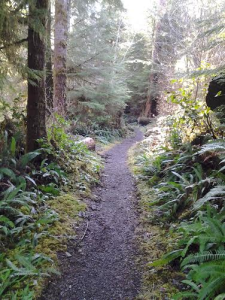 This month we’ve been reading about story in non-fiction and how we can make money from it, and we’ve even got some tricks and tips to write non-fiction. So today, let’s do a something different.
This month we’ve been reading about story in non-fiction and how we can make money from it, and we’ve even got some tricks and tips to write non-fiction. So today, let’s do a something different.
Let’s apply a little of what we’ve learned so far.
First, read a piece of non-fiction. This can be a newspaper or magazine article on a subject or a news story, the blurb on a book’s back jacket, or an advertising article. Now, answer the following questions:
- Do the first lines draw me in?
- Is the article boring or interesting? What makes it so?
- What is my emotional response to the article – happy, sad, excited, bored out of my skull, interested (want to read more)?
- Is the conclusion satisfying?
- Do the accompanying artwork and photographs enhance or detract the piece? How?
- Is the title captivating? Informative? Does it have too much detail or not enough? Is it too long?
 Every article or story must capture the reader’s attention by creating interest. The title and first lines are critical as are any photographs or art work. This is no different in fiction. Title, first lines and book jacket artwork are what intrigues a potential reader to buy your book.
Every article or story must capture the reader’s attention by creating interest. The title and first lines are critical as are any photographs or art work. This is no different in fiction. Title, first lines and book jacket artwork are what intrigues a potential reader to buy your book.
The hook, the ability to draw the reader in emotionally, whether to solve a problem, or tell a story as with news reporting, is what sells newspapers and magazines, gets people subscribe to blogs, read and reading information based advertising.
All the things we’ve talked about, the hook, the title, telling a good story, emotional impact – are story elements that are told without a strongly embellished plot, sometimes without a plot, sometimes without a protagonist (unless it’s an interview, memoir, or article about a specific person), without dialogue, without world building – without many things we use to create fiction, yet good non-fiction can captivate and move us just as much.
So now that we understand how the tactics of fiction and non-fiction writing are similar, let’s answer the question the title asked: How does non-fiction writing improve my fiction stories?
 Non-fiction can improve our fiction writing because through it we learn to tell a story about elements we normally take for granted in our world building. It increases our observational skills, our ability to impart aspects of life we may normally consider mundane in a way that is interesting. Making the ordinary interesting, finding the story in the non-fiction aspects of our worlds, all of this adds depth to our story and enhances our characters interactions with their world. Non-fiction also teaches us to write to our target audience and to express that information in an informative yet entertaining way.
Non-fiction can improve our fiction writing because through it we learn to tell a story about elements we normally take for granted in our world building. It increases our observational skills, our ability to impart aspects of life we may normally consider mundane in a way that is interesting. Making the ordinary interesting, finding the story in the non-fiction aspects of our worlds, all of this adds depth to our story and enhances our characters interactions with their world. Non-fiction also teaches us to write to our target audience and to express that information in an informative yet entertaining way.
So read non-fiction, even try your hand at writing it, and watch your fiction blossom.
